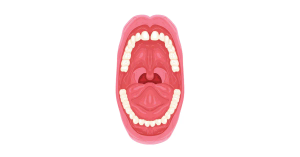Understanding Asthma
Asthma is a chronic respiratory condition characterised by inflammation and narrowing of the airways, leading to symptoms such as wheezing, coughing, chest tightness, and shortness of breath. Common asthma triggers include allergens (such as pollen, dust mites, and pet dander), respiratory infections, cold air, exercise, and environmental pollutants. Asthma symptoms can vary in severity and frequency. Parenting a child with asthma requires diligent care, education, support and careful attention to their respiratory health and well-being.
Developing an Asthma Action Plan
- Consult Healthcare Providers: Work with your child’s doctor to create a personalised asthma action plan. This plan should include daily management strategies, medication schedules, and steps to take during an asthma attack.
- Medication Management: Understand the difference between long-term control medications and quick-relief (rescue) inhalers. Long-term medications, such as inhaled corticosteroids, reduce inflammation and prevent symptoms. Quick-relief inhalers provide rapid relief during an asthma attack.
- Peak Flow Monitoring: Use a peak flow metre to monitor your child’s lung function. Regular monitoring can help you detect early signs of an asthma flare-up and adjust treatment accordingly.
Managing Asthma
Medication Management: Work closely with your child’s healthcare provider to develop an asthma management plan tailored to their individual needs. This plan may include:
- Controller Medications: These medications, such as inhaled corticosteroids, help reduce airway inflammation and prevent asthma symptoms from occurring.
- Rescue Medications: Short-acting beta-agonists provide quick relief during asthma attacks or flare-ups by relaxing the muscles around the airways.
- Other Medications: Depending on your child’s symptoms and triggers, additional medications such as leukotriene modifiers or allergy medications may be prescribed.
Avoiding Triggers: Identify and minimise exposure to asthma triggers in your child’s environment. Common triggers include:
- Allergens (e.g., pollen, dust mites, pet dander)
- Respiratory infections (e.g., colds, flu)
- Irritants (e.g., tobacco smoke, air pollution, strong odours)
- Weather changes (e.g., cold air, humidity)
- Exercise-induced asthma triggers (e.g., vigorous physical activity)
Creating a Healthy Home Environment: Take steps to improve indoor air quality and reduce exposure to asthma triggers at home:
- Keep indoor humidity levels low to discourage mould growth.
- Use allergen-proof mattress and pillow covers to reduce exposure to dust mites.
- Vacuum carpets and upholstered furniture regularly with a vacuum cleaner equipped with a HEPA filter.
- Avoid smoking indoors and in the car, and limit your child’s exposure to secondhand smoke.
Encouraging Physical Activity: Regular physical activity is important for overall health and well-being, even for children with asthma. Encourage your child to engage in activities they enjoy, such as swimming, biking, or walking, and ensure they have their rescue inhaler with them during exercise.
- Monitoring Symptoms: Keep track of your child’s asthma symptoms and peak flow measurements using a peak flow metre or symptom diary. This can help you identify patterns, triggers, and changes in your child’s asthma control over time.
Coping with Asthma Flare-Ups
Recognizing Symptoms: Familiarise yourself with the signs of an asthma flare-up, such as:
- Persistent coughing, especially at night
- Wheezing or whistling sound when breathing
- Shortness of breath or rapid breathing
- Chest tightness or pain
- Difficulty speaking or performing normal activities
Taking Action: Follow your child’s asthma action plan to manage flare-ups promptly:
- Administer rescue medication as directed.
- Encourage your child to rest in a comfortable, upright position.
- Use a humidifier or steamy shower to help ease breathing.
- Seek medical attention if symptoms worsen or do not improve with treatment.
School and Asthma
- Communicate with School Staff: Inform teachers, school nurses, and coaches about your child’s asthma. Provide them with a copy of the asthma action plan and ensure they know how to recognize and respond to asthma symptoms.
- Medication Access: Ensure your child has access to their quick-relief inhaler at school. Depending on their age, teach them how to use their inhaler correctly or ensure that school staff are trained to assist.
- Educational Accommodations: Work with the school to develop an Individualised Health Plan (IHP) or a 504 Plan if necessary. These plans can provide accommodations such as extra time to complete physical activities and permission to carry inhalers.
Emergency Preparedness
- Recognize Severe Symptoms: Understand the signs of a severe asthma attack, such as extreme difficulty breathing, blue lips or face, and unresponsiveness. These require immediate medical attention.
- Emergency Plan: Ensure your child’s asthma action plan includes steps for handling severe attacks. Keep emergency contact numbers handy and know the fastest route to the nearest hospital.
- First Aid Training: Consider getting trained in basic first aid and CPR. This knowledge can be invaluable in case of a severe asthma attack or other emergencies.
Seeking Support
- Family Support: Lean on your family members for emotional support and assistance with asthma management tasks. Educate them about asthma and involve them in your child’s care whenever possible.
- Peer Support: Connect with other parents of children with asthma through support groups, online forums, or community organisations. Sharing experiences and tips with others who understand what you’re going through can provide valuable support and encouragement.
- Professional Support: Reach out to your child’s healthcare team, including their paediatrician, allergist, or pulmonologist, for guidance and support. They can offer personalised advice, answer your questions, and help you navigate the challenges of managing your child’s asthma effectively.
Celebrating Successes
- Acknowledging Progress: Celebrate your child’s achievements in managing their asthma, no matter how small. Whether it’s learning to use their inhaler correctly, identifying and avoiding triggers, or successfully managing a flare-up, praise their efforts and resilience.
- Quality Time: Spend quality time with your child doing activities they enjoy, asthma and all. Engage in indoor and outdoor activities, create special memories, and cherish the moments you share together as a family.
- Looking Ahead: While asthma may present challenges, it doesn’t define your child or their future. With proper management, support, and determination, your child can lead a full and active life, pursuing their dreams and aspirations with confidence.








